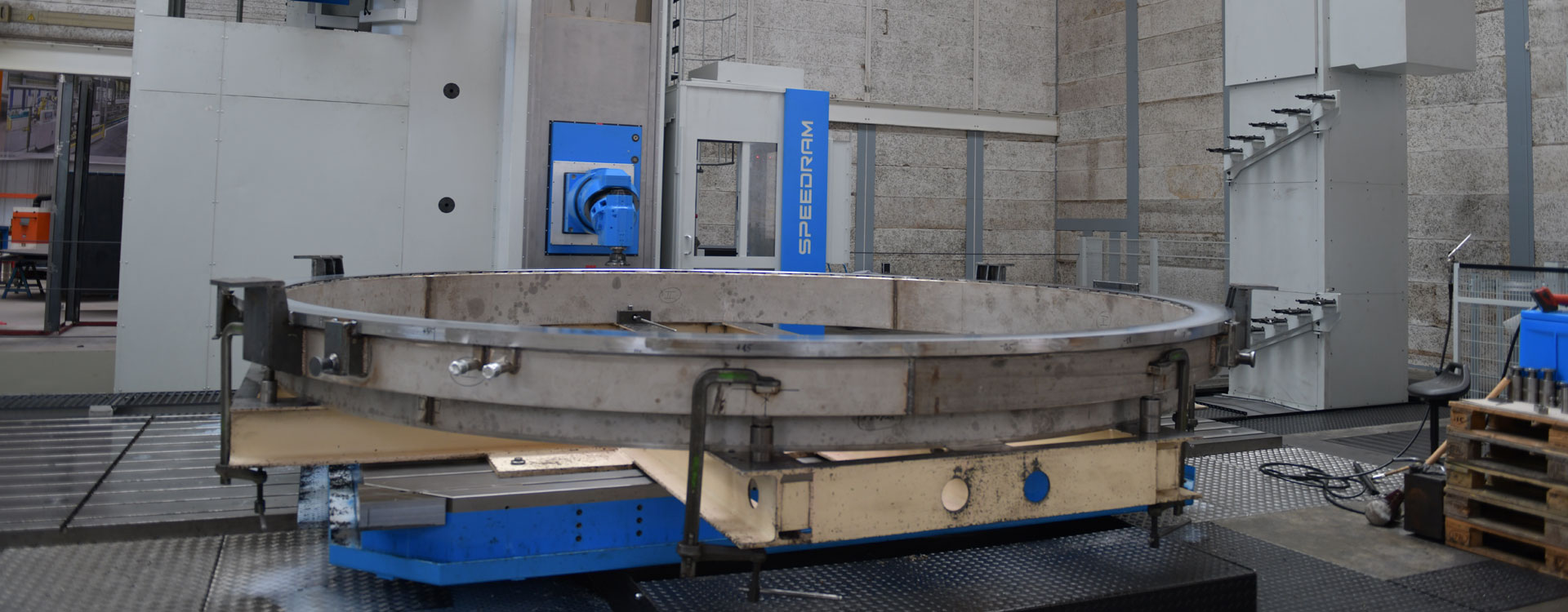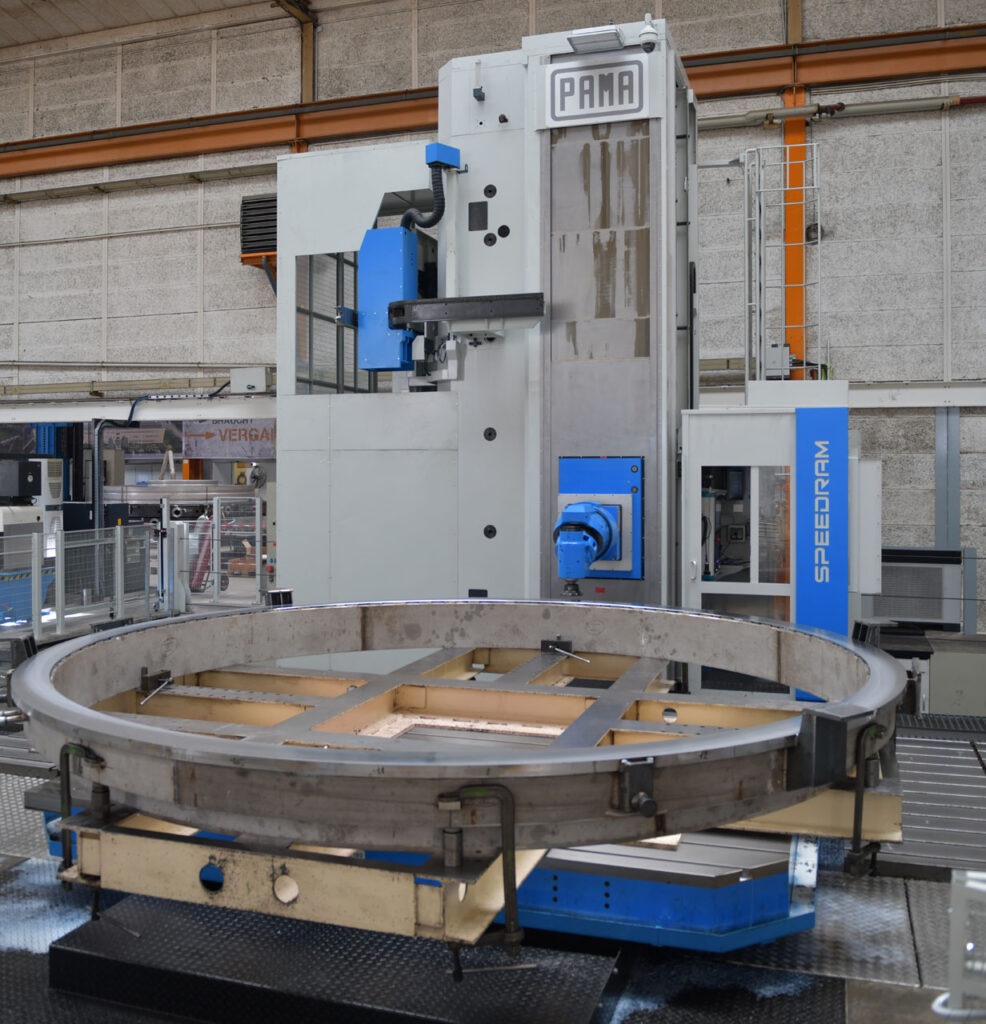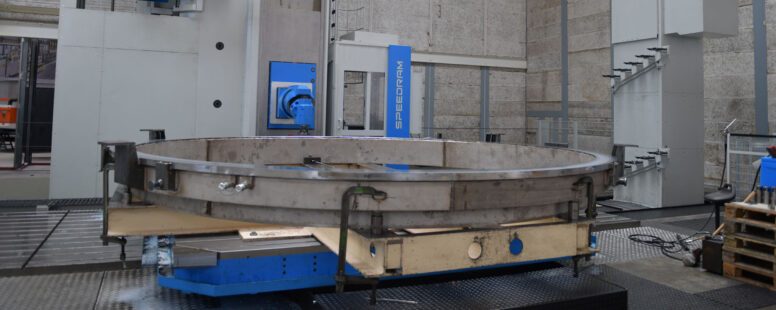Manufacturing – keeping its finger on the pulse of the times

EBNER Industrieofenbau | Georg Gattringer, EVP Produktion
Manufacturing - keeping its finger on the pulse of the times
EBNER Industrieofenbau invests in a new, state-of-the-art machining center in Leonding, Austria.
Key components for our heat treatment facilities are manufactured at the EBNER works in Leonding, Austria – everything from fan impellers and workbases to protypes. Our high-precision manufacturing is carried out by teams of specialists, who fulfill the highest quality criteria even as they meet the strictest deadlines.
Thanks to our extensive know-how and our decades of experience in metalworking and machining, the entire manufacturing process – from cutting up to welding – can be encompassed within our main Austrian works. Processing around 560 metric tons of heat-resistant materials every year, we fabricate complex components precisely and efficiently, ensuring that they are of the highest possible quality.
A significant element in this process is EBNER’s welding expertise. EBNER is certified in accordance with ÖNORM ISO 3834-2, and all welding procedures are subject to extensive testing. During the planning phase, parameters are optimized on trial pieces. For quality assurance, non-destructive testing methods like X-ray testing (RT) and dye penetrant testing (PT) are employed, with mechanical testing (including bend and tensile strength tests) also seeing use. To round out the tests, metallographic sections are analyzed to provide detailed evaluations of the microstructural properties of the weld seams. A specific Welding Procedure Specification (WPS) is defined for each combination of materials, ensuring that results are reproducible. This ensures that the properties of the base material, as well as the quality of the weld seam, remain constant over the long term.
By investing in a new, state-of-the-art machining center, EBNER is once again underscoring its commitment to maintaining its presence in Austria and to continuously developing its Leonding works. The following interview provides insights into the strategic goals that shaped the project, the technical highlights of the new equipment, and the challenges that were faced before this modernization project could be fully implemented. The answers show how EBNER’s workshop really does keep its finger on the pulse of the times.
HICON: Which core competencies can be found in the Leonding manufacturing center?
Our manufacturing team in Leonding leads the way when it comes to the introduction of new systems and new processes. Projects like PMI (3D data files for manufacturing centers), Spare Items (replacement of slow-moving items) and Intralogistik (optimized movement between storage locations) set standards that were later implemented at the other manufacturing centers of the EBNER GROUP. This allows us to provide our customers with an equally high standard of quality anywhere in the world.
HICON: What does the opening of the new machining center mean for the EBNER workshop in Leonding, Austria?
This investment clearly shows our commitment to our Austrian works, and responds to the rising level of quality our customers demand from us as the primary supplier. At the same time, we are of course proud to have high-end equipment like the new PAMA in our machine park.
HICON: In making this investment, what strategic goals is EBNER pursing?
This new machining center replaces the old Colgar center, which while reliable had been in operation for around 25 years. The alternative would have been to contract with an external company for machining tasks. That would have, however, created significant additional costs due to the logistics of shipping large components and the need for special transports. In-house production also provides us with a great deal of flexibility and independence, both of which are very advantageous to our customers.

HICON: What manufacturing capabilities does the new machining center offer?
With the new PAMA, we are capable of machining workbases up to size 490, with a diameter of 6150 mm. Furthermore, horizontal muffles with lengths up to 18 m can be machined.
HICON: Is there a particular highlight that you would like to point out?
Integrating the new equipment into our workshop, which is only 20 meters wide, was a real challenge. However, thanks to the flexibility of the housing of the PAMA unit, we could find a solution that not only saves space but can be expanded to suit components of any size.
HICON: What advantages will the new machining center bring?
The extended reach of the axes and the larger table reduce the number of clamping procedures and reduce processing times. Together, these also reduce costs.
HICON: Will the new machining center contribute to more sustainable manufacturing/conserve resources?
Absolutely – components can now be fully machined in-house. This means that the transport of heavy loads is eliminated, which not only reduces costs and carbon emissions but also reduces fabrication times.
HICON: How long did it take to implement the project? Was any particular preparatory work necessary or did any conditions have to be fulfilled to create the framework for the project?
The first discussions took place back in 2018. Concrete planning began early in 2022, and the equipment was purchased in mid-2023. The delivery period was around 12 months, after which installation began. Once of the greatest challenges was certainly that of installing the foundation while production was still going on – which was only made possible by moving most fabrication to the night shift. We also introduced new CAM software, and the production team attended extensive training sessions alongside their normal daily duties.
HICON: How long has the new machining center been operating, and what conclusions can you draw now that the first production phase is over?
The center has been officially in operation since June 2025, and we have already carried out our first machining projects. They reflected the excellent coordination that exists between a wide variety of different departmental areas, from the team of operators to programming and tool preparation.
HICON: What does “keeping your finger on the pulse of the times” mean for you and your team?
Even if the next few years are very challenging, we are convinced that – thanks to our know-how and the expertise found among our employees – we will be able to extend our technological lead and will continue to pave the way for our subsidiaries throughout the world. To continue to be successful, we constantly track new technologies and make careful decisions regarding investment. It isn’t just about using the latest technologies, but about efficiently integrating our existing resources into our product range and our processes. Well thought out and lean workflows often allow decisive savings to be achieved.



